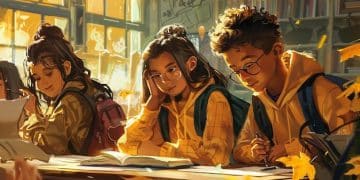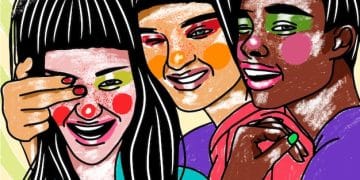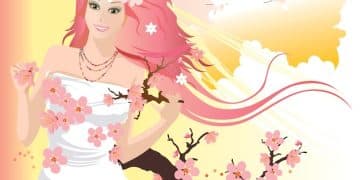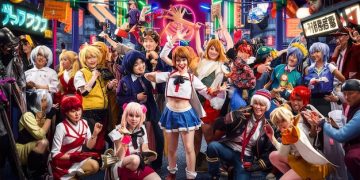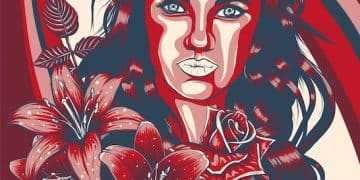Unveiling the Magic of Shojo Manga: A Comprehensive Review
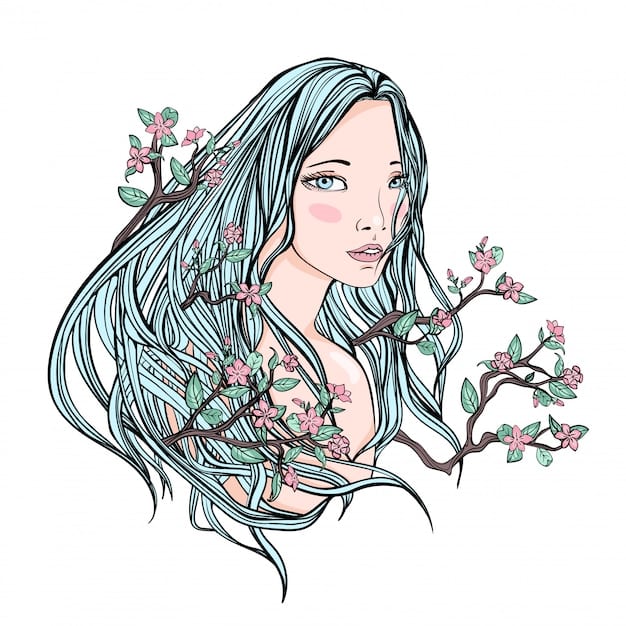
Shojo manga, aimed at a young female audience, explores themes of romance, friendship, and personal growth, offering diverse narratives and artistic styles that captivate readers with its emotional depth and relatable characters.
Shojo manga, a genre primarily targeting young female readers, stands out for its focus on relationships, emotions, and personal journeys. It’s more than just love stories; it’s about growth, self-discovery, and the bonds we form. Let’s explore the fascinating world of shojo manga and what makes it so appealing.
What Defines Shojo Manga?
Shojo manga, directly translated as “girls’ manga,” is characterized by its focus on young female readers. It delves into themes and narratives that resonate with their experiences and interests. But what exactly sets it apart from other manga genres?
Unlike shonen manga, which targets young boys and typically features action-packed adventures and battles, shojo manga emphasizes emotional connections, character development, and intricate relationships. This focus often results in stories that are deeply personal and relatable.
Key Themes in Shojo Manga
Shojo manga explores a wide range of themes that are central to the lives of young women. These themes contribute to the genre’s enduring popularity and its ability to connect with readers on a profound level.
- Romance: Love is a central theme, often depicted with innocence, sweetness, and heartfelt emotion.
- Friendship: The bonds between friends are crucial, highlighting support, loyalty, and shared experiences.
- Personal Growth: Characters often overcome challenges and evolve, teaching important life lessons.
- Family: Relationships with family members play a significant role, influencing characters’ decisions and paths.
These themes, woven together, create narratives that are both engaging and meaningful.
In conclusion of this section, shojo manga distinguishes itself through its emphasis on emotional depth, character-driven stories, and themes relevant to young female readers, offering a unique and often heartwarming reading experience.
The Evolution of Shojo Art Styles
The art style of shojo manga has evolved significantly over the decades. From the big, sparkling eyes that are often considered a hallmark of the genre to more modern, diverse representations, the visual elements play a crucial role in storytelling.
Early shojo manga art often featured delicate lines and exaggerated features to convey emotion. As the genre matured, artists began experimenting with different styles, reflecting changing tastes and societal norms.
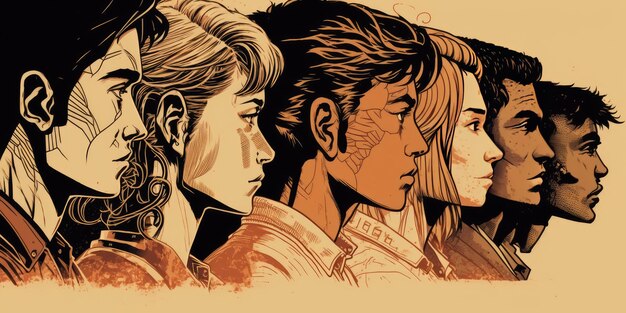
Key Characteristics of Shojo Art
While the art style has evolved, certain elements remain consistent in shojo manga, contributing to its unique aesthetic.
- Large, Expressive Eyes: Eyes are often the focal point, used to convey a wide range of emotions.
- Floral Backgrounds: Flowers and other decorative elements add a touch of romance and beauty.
- Dynamic Panel Layouts: Creative use of panels enhances the storytelling and pacing.
- Emphasis on Detail: Intricate details in clothing, hair, and backgrounds create a visually rich experience.
These characteristics, combined with evolving artistic techniques, make shojo manga visually captivating.
In conclusion, the art style of shojo manga has undergone significant changes, from classic, idealized representations to more modern and diverse styles, while still retaining key characteristics that define its unique visual appeal.
Iconic Shojo Manga Series
Several shojo manga series have achieved iconic status, influencing the genre and captivating generations of readers. These series often feature compelling characters, intricate plots, and themes that resonate deeply with audiences.
From classic stories of love and friendship to more complex narratives exploring social issues, these series showcase the breadth and depth of shojo manga.
Examples of Influential Series
- “Fruits Basket”: Explores themes of family, healing, and acceptance through the story of Tohru Honda.
- “Sailor Moon”: A magical girl series that redefined the genre with its empowering female characters and themes of love and justice.
- “Cardcaptor Sakura”: A whimsical adventure about a young girl who must collect magical cards, filled with heartwarming moments and strong friendships.
- “Ouran High School Host Club”: A comedic and romantic series that challenges gender stereotypes and features a diverse cast of characters.
These series have not only entertained readers but also paved the way for future generations of shojo manga.
In conclusion, iconic shojo manga series have left an indelible mark on the genre, influencing storytelling, character development, and visual styles, and continuing to resonate with readers worldwide.
Romance Tropes in Shojo Manga
Romance is a cornerstone of shojo manga, and certain tropes have become staples in the genre. These tropes, while sometimes predictable, offer a sense of familiarity and comfort, allowing readers to immerse themselves in the stories.
From the classic love triangle to the unlikely pairing of opposites, romance tropes in shojo manga provide a framework for exploring the complexities of love and relationships.
Common Romance Tropes
- The Love Triangle: Two or more characters vying for the protagonist’s affection, creating tension and drama.
- Enemies to Lovers: Characters who initially dislike each other gradually develop romantic feelings, often through shared experiences.
- Childhood Friends: Characters who have known each other since childhood discover romantic feelings as they grow older.
- Forbidden Love: Characters facing obstacles such as social status, family disapproval, or other circumstances that make their relationship challenging.

These tropes, when executed well, can create compelling and emotionally resonant stories.
In conclusion, romance tropes in shojo manga provide a familiar yet engaging framework for exploring themes of love, attraction, and relationships, offering readers a comforting and often heartwarming experience.
Beyond Romance: Other Genres in Shojo Manga
While romance is a dominant theme in shojo manga, the genre encompasses a wide range of other genres and subgenres. From fantasy and science fiction to historical and slice-of-life stories, shojo manga offers something for every reader.
Exploring these diverse genres allows shojo manga to address a broader range of topics and appeal to a wider audience.
Diverse Genres in Shojo Manga
- Fantasy: Magical adventures, mythical creatures, and epic quests centering on female protagonists.
- Science Fiction: Futuristic worlds, advanced technology, and explorations of societal issues.
- Historical: Stories set in historical periods, often featuring strong female characters navigating challenges and romance.
- Slice-of-Life: Realistic portrayals of everyday life, focusing on relationships, personal growth, and emotional experiences.
These genres allow shojo manga to explore complex themes and offer unique perspectives.
In conclusion, shojo manga extends far beyond romance, encompassing a diverse range of genres that allow for exploration of various themes, perspectives, and storytelling styles, offering readers a rich and varied experience.
The Influence of Shojo Manga on Culture
Shojo manga has had a significant impact on global culture, influencing art, fashion, and media. Its themes, characters, and visual styles have resonated with audiences worldwide, contributing to its enduring popularity.
From inspiring fashion trends to shaping perceptions of relationships and gender roles, shojo manga’s influence is undeniable.
Cultural Impact of Shojo Manga
- Fashion: Shojo manga characters have inspired fashion trends, particularly in Harajuku and other subcultures.
- Art: The art style of shojo manga has influenced artists and illustrators around the world.
- Media: Shojo manga adaptations, such as anime and live-action dramas, have reached global audiences, increasing the genre’s visibility.
- Social Issues: Some shojo manga series address social issues such as gender inequality, bullying, and mental health, sparking conversations and raising awareness.
This cultural impact highlights the power of shojo manga to connect with people on a global scale.
In conclusion, shojo manga has exerted a profound influence on global culture, shaping art, fashion, media, and conversations around social issues, demonstrating its lasting impact and relevance in the modern world.
Shojo Manga in the Digital Age
The digital age has transformed the way shojo manga is consumed and created. Online platforms, digital distribution, and social media have made the genre more accessible than ever before, while also offering new opportunities for artists and creators.
From reading manga online to connecting with other fans on social media, the digital age has enhanced the shojo manga experience.
Opportunities in the Digital Age
- Online Platforms: Digital manga platforms offer a vast library of titles, making it easy for readers to discover new series.
- Digital Distribution: Artists can self-publish their work online, reaching a global audience without the need for traditional publishers.
- Social Media: Fans can connect with each other, discuss their favorite series, and share fan art and cosplay.
- Accessibility: Digital manga is often more affordable and accessible than print copies, making it easier for readers to enjoy the genre.
These opportunities have expanded the reach and influence of shojo manga.
In conclusion, the digital age has revolutionized the shojo manga landscape, enhancing accessibility, fostering community engagement, and providing new avenues for artists to share their work, ensuring the genre’s continued growth and relevance in the years to come.
| Key Point | Brief Description |
|---|---|
| 🌸 Core Themes | Romance, friendship, personal growth, and family are central themes often explored. |
| 💖 Art Style | Evolving from large-eyed characters to more diverse and detailed visual representations. |
| ✨ Iconic Series | “Fruits Basket,” “Sailor Moon,” and “Cardcaptor Sakura” are influential examples. |
| 🌐 Digital Age | Online platforms and social media enhance accessibility and community engagement. |
FAQ
▼
Shojo manga is primarily aimed at young female readers, typically ranging from pre-teens to young adults. However, it can be enjoyed by anyone regardless of age or gender.
▼
Common themes include romance, friendship, personal growth, family relationships, and overcoming obstacles. These themes often resonate with the experiences of young female readers.
▼
The art style has evolved from exaggerated features and delicate lines to more diverse and realistic representations, while still maintaining expressive eyes and dynamic panel layouts.
▼
Series like “Fruits Basket,” “Sailor Moon,” and “Cardcaptor Sakura” have had a significant impact on the genre, influencing storytelling, character development, and visual styles.
▼
The digital age has made shojo manga more accessible through online platforms, digital distribution, and social media, allowing fans to connect and artists to reach a wider audience.
Conclusion
In conclusion, shojo manga offers a captivating exploration of emotions, relationships, and personal growth that resonates with young female readers and beyond. Its rich history, diverse genres, and evolving art styles make it a vibrant and influential part of global culture, continuing to thrive in the digital age and inspire future generations.
